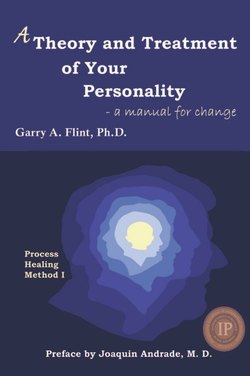Читать книгу A Theory and Treatment of Your Personality - Garry Flint - Страница 56
На сайте Литреса книга снята с продажи.
Treatment
ОглавлениеI am going to tell you how the treatment process works. Normally, memory change involves creating a new structure and a collage of memories associated with that structure. What is different in treatment, as opposed to everyday life, is that treatment usually takes place in a quiet situation where there is no extra stimulation (see Figure 3-13, next page). When you think of an issue, it comes into or is created in the Active Experience.
The trauma issue is a collage of memories with a unique neural structure. Three crossed lines represent the neural structure. The subconscious orchestrates the treatment process. The treatment process involves stimulation by the subconscious, which causes the Basic Neurostructure to create a new collage. However, in the treatment setting, since there is little activity in the Active Experience, the structure of the collage and its content, namely the Content and Emotion Memories, remain the same. Treatment occurs when both the collage becomes active and a memory process takes place. I call this memory process a “memory event.” A memory event is some neural activity that results in a new collage of memories. In treatment, the memory event works on the emotions of the trauma memory.
With treatment stimulation, the collage representing the trauma issue is recreated, changed, and remembered. Because of the lack of activity in the Active Experience, the structure and the content of the collage do not change, but the emotions in the collage do. The change is that the patient’s present neutral or positive emotion (memory) replaces some of the trauma emotion (memory) associated with the collage. The memory event causes the changed collage to be remembered. After a memory event, when the patient thinks about the issue again, the trauma memory is immediately recreated in the Active Experience. The memory now has less pain associated with the issue. Continued treatment of the same structure by the subconscious causes a sequence of memory events and changing collages. This treatment gradually reduces the pain until there is no pain associated with the memory of the issue. During this process, you or the patient will feel the pain of the issue gradually diminish to zero or to a suitable intensity of emotion. A later section describes the strategy for treating intense trauma.
The treatment setting refers not only to the external setting, but also to the internal setting. The interaction between you, your environment — including the therapist, if present — and your internal process, such as self-talk, is part of the activity in the Active Experience. The optimal treatment setting is where there is not much stimulation externally or internally to create unnecessary activity in the Active Experience. Process Healing works best when there are few memories active in the Active Experience. Communicating about other topics or doing something during active Process Healing does not usually disrupt the treatment.
When some internal or external stimulation triggers additional activity into the Active Experience, the additional activity disorganizes the Active Experience. This disorganization is like a texture or ripple that affects the entire Active Experience (see Figure 3-14). The disorganization or more complex activity causes the creation of a new memory structure or a change in the structure of the trauma issue being treated. The new memory structure is created to take into account all the active memories in the Active Experience. With a memory event, the newly created memory structure in the disorganized Active Experience is different from the original memory structure of the trauma issue. Because of this, the Emotion Memories associated with the structure of the trauma issue are not replaced. The disorganization of the Active Experience due to disruptions in either the external or internal treatment setting can be a barrier to successful treatment.
In treatment, we want the structure of the trauma issue to remain unchanged. However, disorganization constantly changes the structure of the trauma issue and creates new, unique structures and collages. These new structures are not lasting memories because the structures are changing. A single memory event with a unique structure is not enough to cause lasting memories. Remember, the patient is still thinking about the trauma issue. However, after a memory event in the presence of disorganization, when the patient recalls the trauma issue into the Active Experience again, he or she does not feel any change in the painful memory. The memory event did not operate on the structure of the trauma memory. The treatment process is not working. You will feel the emotion remain constant. By removing the memories in the Active Experience causing the barrier to treatment (the cause of the disorganization), the treatment process will work again.
